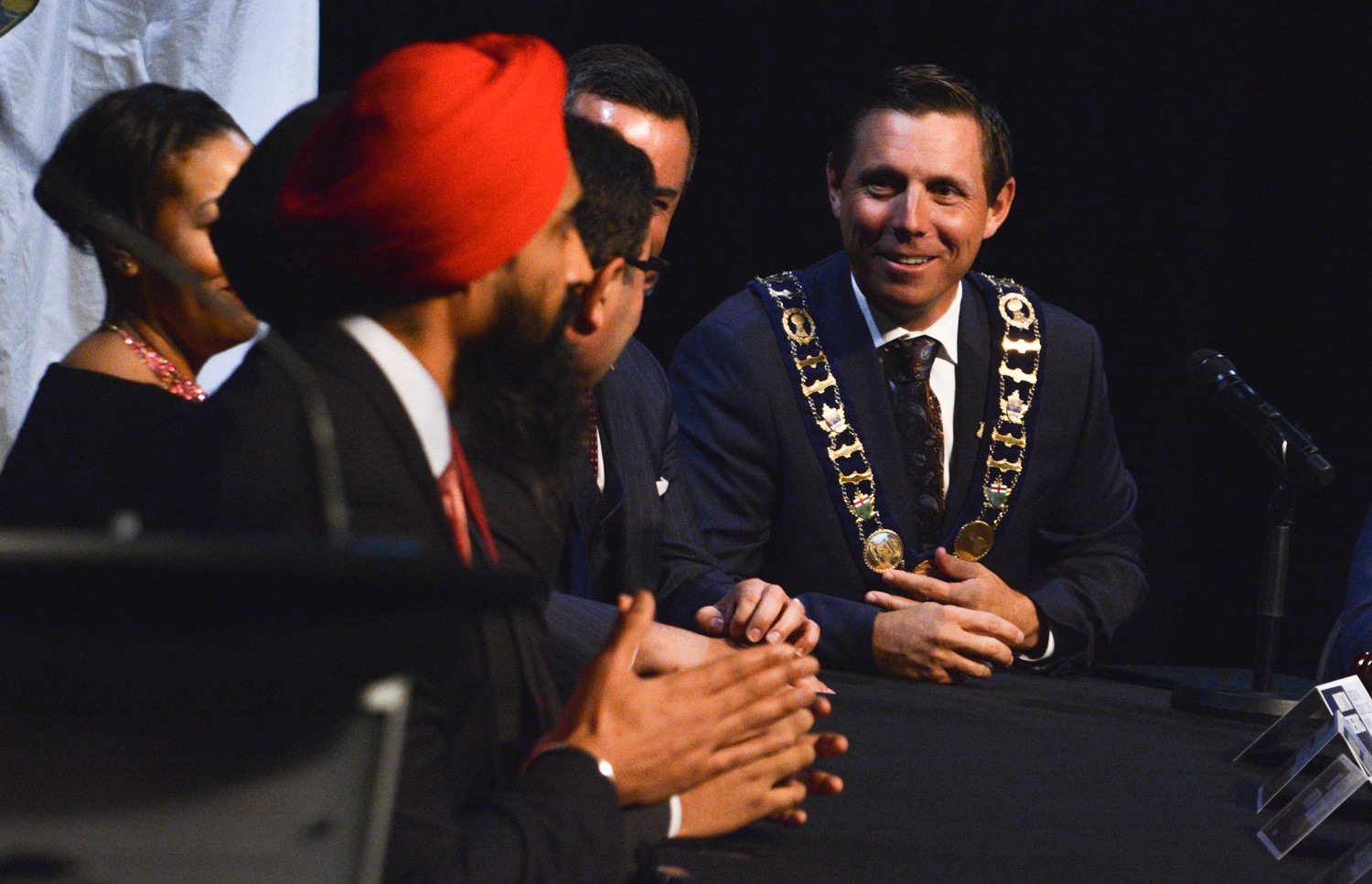
Brampton council lays out vision for next two years without money to pay for it
Observers of Brampton City Hall have witnessed a strange pattern under Mayor Patrick Brown. The media hungry politician likes to step in front of the cameras and outline all the big ideas council colleagues put forward for the city.
Few details accompany his social media posts trumpeting what he claims to be doing. And even fewer funds are budgeted for his range of promises.
Then, Brown steps out from the spotlight and oversees a budget process that under his watch has cut or delayed projects, while choking off future plans, to ensure the self-serving tax freezes he has forced each year since becoming mayor.
None of it adds up.
Just over two years ago, Brampton residents watched the inauguration of the new council members including Brown. A mix of old and new faces, the mood projected from inside the Rose Theatre was one of hope and aspiration, focused on creating a future the city’s hard-working residents so desperately crave.
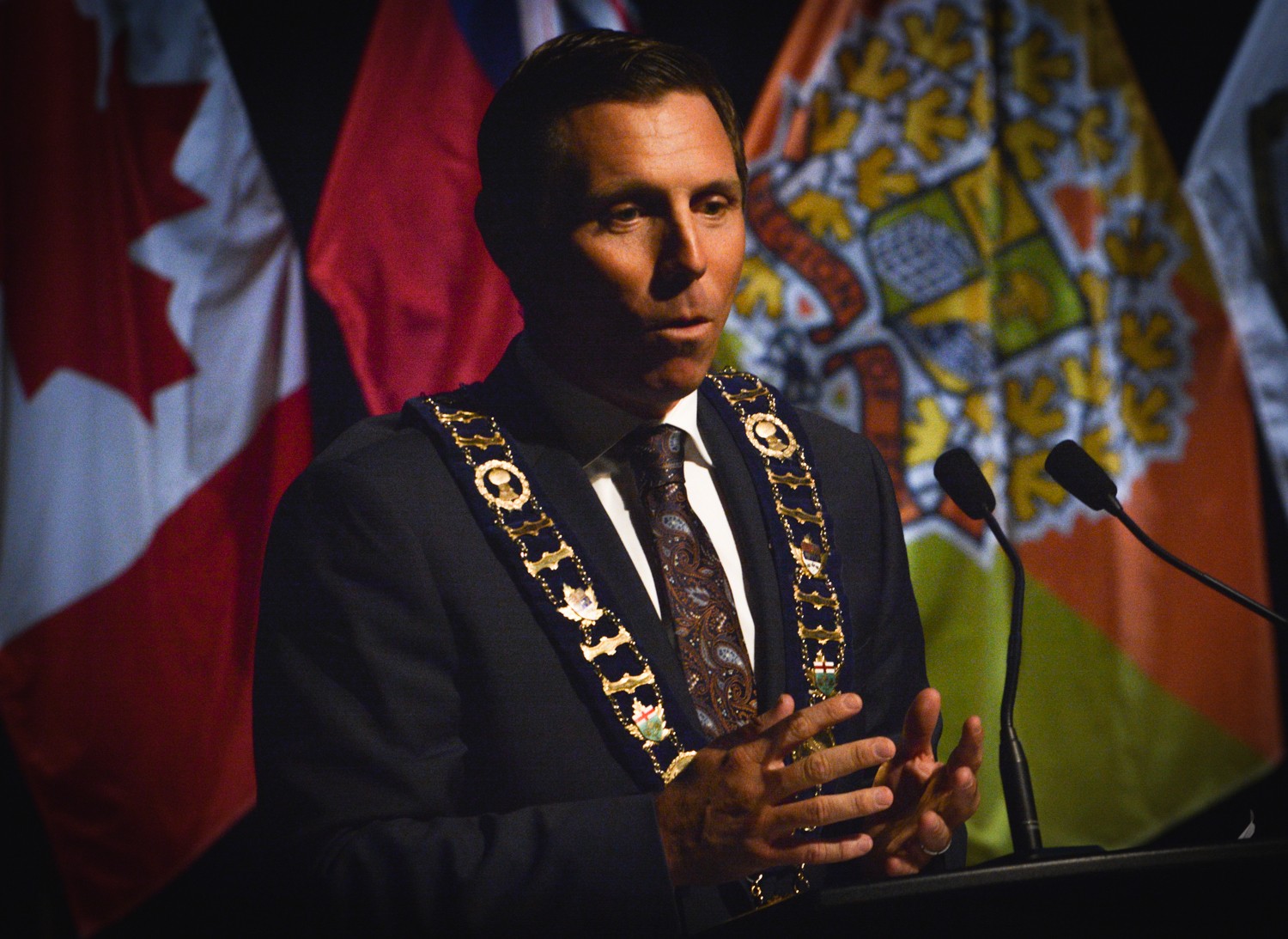
Mayor Brown speaks of his vision for Brampton during council inauguration in December 2018
With the term now halfway complete, councillors took a moment during the January 27 City Council meeting to accept praise from their chief administrative officer, David Barrick, for their achievements thus far.
Initiatives such as installing automated speed enforcement cameras in school zones were highlighted, as many plans set in place before this term were singled out.
But for a city whose services are not keeping up with its growth, in part because of Brown’s three consecutive tax freezes, long-standing needs are being ignored.
Does Brown hope his PR act will confuse residents into thinking real progress is being made? It’s a question more and more taxpayers are asking.
In response, council laid out its vision for the next two years, before the 2022 municipal election.
Through meetings with staff, council members voted on what projects need to be prioritized during their remaining time in office. A list of 16 items was the result, ranging from healthcare and transit, to key pieces of planning to move the city forward as it continues its rapid growth. There was no guarantee any of it will get done by term's end.
The overarching problem highlighted throughout the effort to lay out priorities is a lack of funds from the city. It’s hard to put a final estimate on how much these projects will cost, as many of the 16 projects on the list don’t even have a price associated with them.
It’s unclear why staff under Barrick, who had no experience in city administration or any type of government management before his hiring at the end of 2019, has not provided cost calculations for projects that were put on a priority list. Barrick was fired from his brief role heading a conservation agency in Niagara, after his mismanagement and after a provincial audit revealed he was not hired properly by the organization.
He was also implicated by the Ontario ombudsman in a fraudulent hiring process that gave Barrick’s former boss at the conservation authority the CAO position at Niagara Region.
Now he’s responsible for steering Brampton into the future, after Brown oversaw his selection as the City’s CAO. The two have a number of ties through Conservative political circles.
A concern for Councillor Jeff Bowman is how all of these projects will be done in the short time he and his colleagues have left. “I made it very clear in council that we should have only a handful of key priorities to achieve before the end of the term. We can do 16 poorly or we could do 5 or 6 really well,” he told The Pointer in an email.
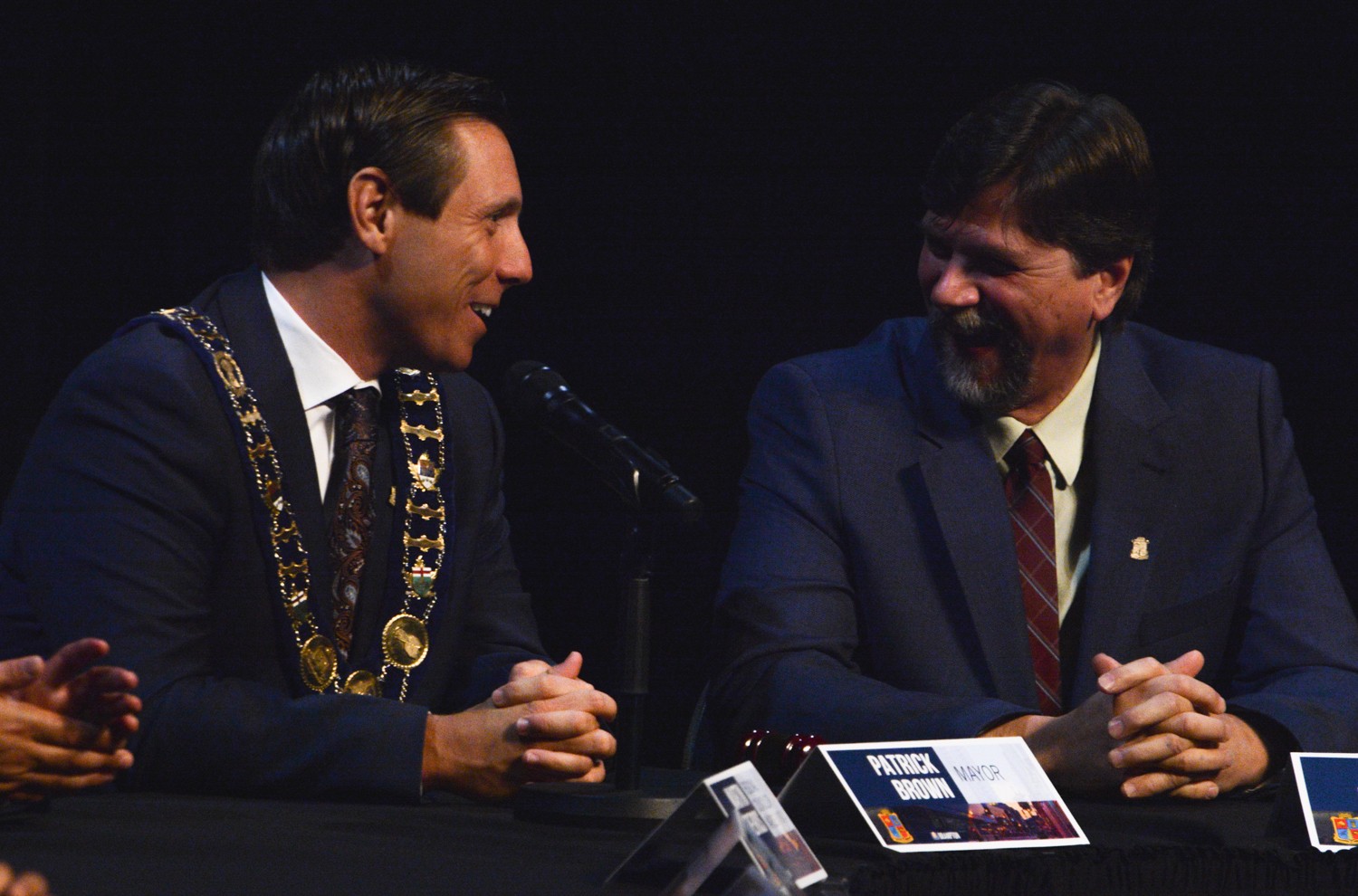
Mayor Brown and Councillor Jeff Bowman during council inauguration in 2018.
Collectively, council agreed the most important item to focus on is getting a second full-service hospital in the city. William Osler has submitted its second-phase expansion proposal to the Province, as part of the commitment Queen’s Park made under previous Liberal governments to invest in Peel Memorial. Osler runs the facility along with Brampton Civic, the only full-service hospital for the city’s 656,000 residents. Brampton welcomes approximately 14,000 new residents every year, and the need for adequate healthcare, which is currently not being provided, will only grow.
Peel Memorial previously functioned as a full service hospital before it closed its doors in 2007 for the rebuild, as Civic was opened. When Memorial reopened in 2017, the 325,000 square-foot facility offered day surgeries and preventive care. It could not admit patients and had no beds for overnight care, with an emergency department that does not stay open all day and sends patients elsewhere for complex care. Osler, despite usual practices, did not consult the public before submitting its phase-2 proposal and there are no publicly available details about what it includes. Osler submitted these plans to the province in March 2020, long after it was supposed to, under a previous understanding between the former Liberal government which helped fund the proposal.
“I think everyone is concerned about our hospital crisis, and the lack of progress so far in getting funding for a much needed second full-service hospital in this City. I believe it will certainly be an election issue in the next Provincial election,” Bowman said.
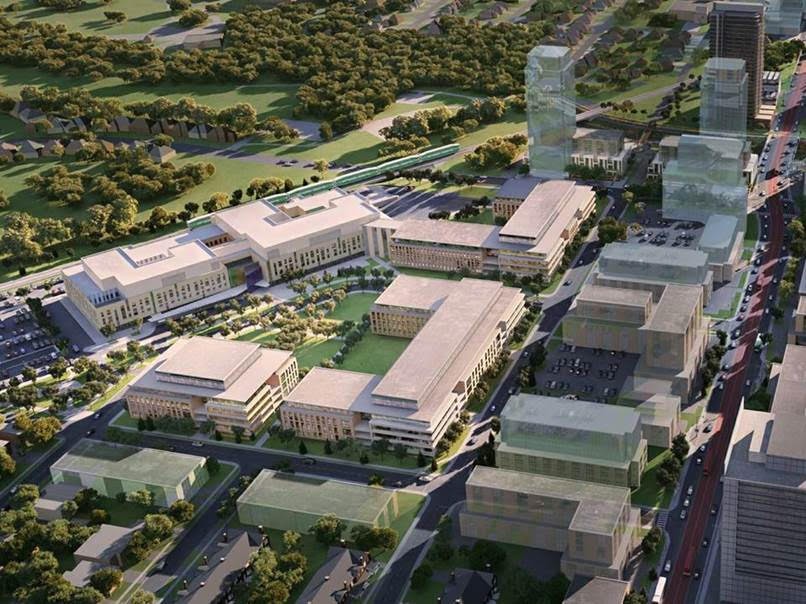
Early renderings for the expansion of Peel Memorial. It's unclear what the plan looks like now as the proposal submitted to the Province has not been shared with the public.
Under Brown, hospital funding has been another confusing issue.
The cost for a hospital is largely paid for by the Province, but the city, usually in partnership between the local municipality and the health system (Osler in this case) is responsible for paying a percentage of the capital cost. When the first phase of Memorial was constructed, a municipal levy collected $60 million. During the City’s 2021 budget deliberations a levy for the second phase was not discussed. Earlier budgets under Brown also failed to collect funds that will be needed to expand healthcare in a city that currently has less than half the number of hospital beds per capita compared to the provincial average.
But Brown refuses to budget for these critical needs, instead pushing his tax freezes while ignoring healthcare.
The staff report highlighting the priorities states the City’s job is to obtain funds and a “provincial commitment” before the next council is sworn in. It’s unclear if Brown will continue to ignore the local responsibility, which in other municipalities such as Oakville and Vaughan was fulfilled through a combination of fundraising and money collected from property taxpayers. When they showed the Province their commitment to the local share, projects for large hospitals in both municipalities were greenlit by Queen’s Park.
In Brampton’s case, however, Brown’s failure to include a local commitment in the annual budget, preferring tax freezes each of the three years under his watch, makes it difficult for the city to get a funding commitment from the Province. The understanding for decades is that a local share has to be provided before Queen’s Park moves forward with hospital expansion.
In an October press conference at Peel Memorial, Premier Doug Ford said plans are being worked on and the expansion will happen. “Friends, as sure as I’m standing here, Peel Memorial Hospital, it will get built.”
Council has not addressed why it has failed to start collecting funds for its required local share or how it plans to pay for it. Brown might not be around when the problem he created needs a solution.
“We're nowhere near a point to bring a number or proposal to council at this time, but it is a conversation. It will be ongoing,” Barrick said, noting details for future funding needs will be presented when staff “have the appropriate information.”
Municipalities routinely start collecting their share for hospital expansion before a project cost has been delivered by the Province. When a city knows it needs a hospital and Queen’s Park has already committed to one, proper budgeting often begins as early as possible, so taxpayers aren’t left with a huge tax increase or levy at the eleventh hour.
According to Infrastructure Ontario, the project is expected to cost between $200 million and $499 million. A December 2020 report shows the contract will be initiated sometime in 2024, over a year after the current council dissolves, something councillors are concerned about as well.
“I am hoping that funding can be in place by the end of this term of council, however things will have to move quickly if that goal is to be completed as there is basically about 20 months left in our term,” Bowman said.
A second project high on council’s priority list is Riverwalk, aimed at controlling flooding from Etobicoke Creek into Brampton’s downtown core when extreme weather events occur. In September, the Ontario Ministry of Environment, Conservation, and Parks approved the Toronto and Region Conservation Authority’s (TRCA) environmental assessment outlining how this could be done.
The City’s priority is to have the design completed and to secure a commitment to fund the project by the end of the term. The design will involve making the Etobicoke Creek wider and deeper, replacing existing bridges, and doing work along a portion of Ken Whillans Drive to accommodate the wider flood-relief channel.
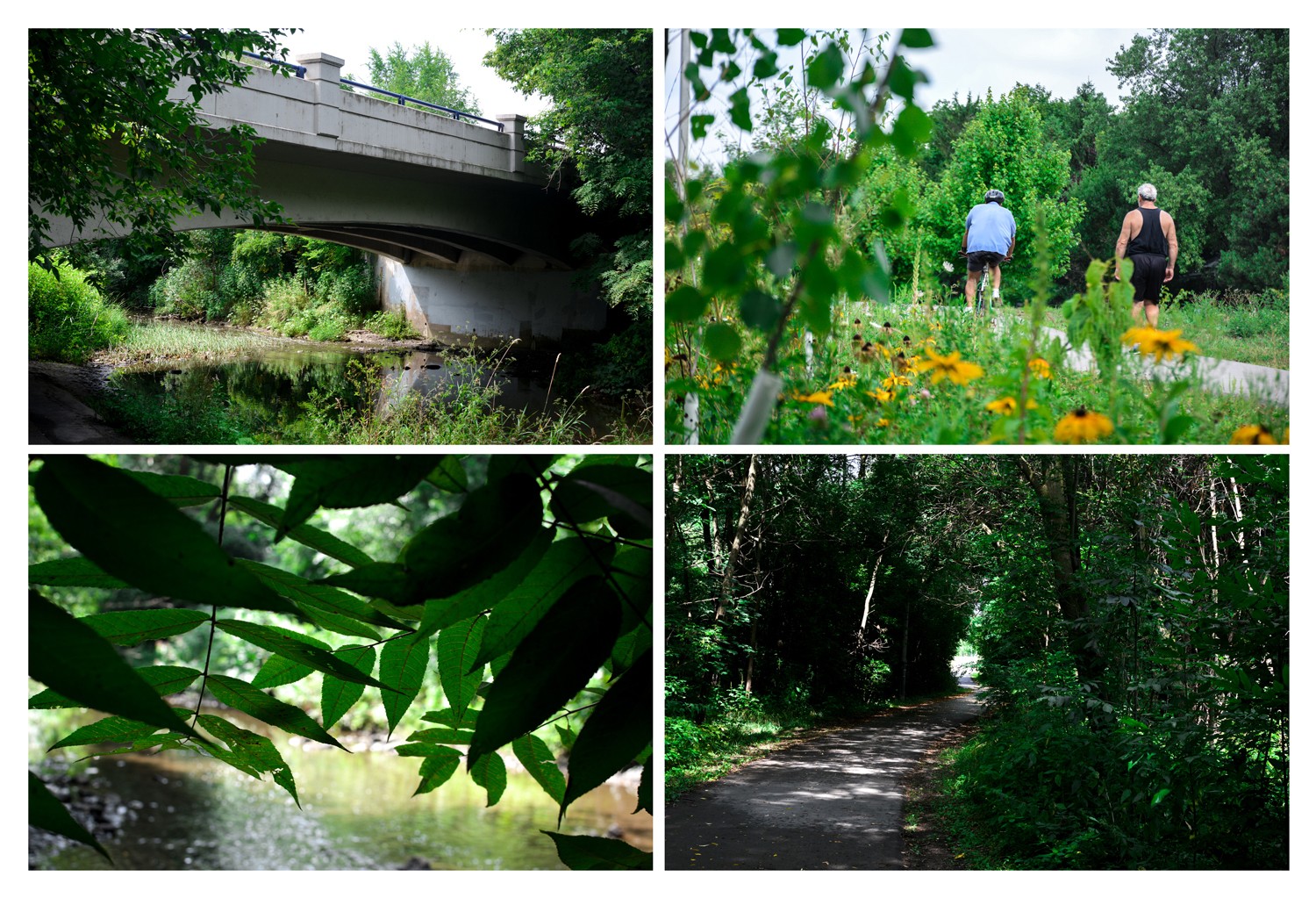
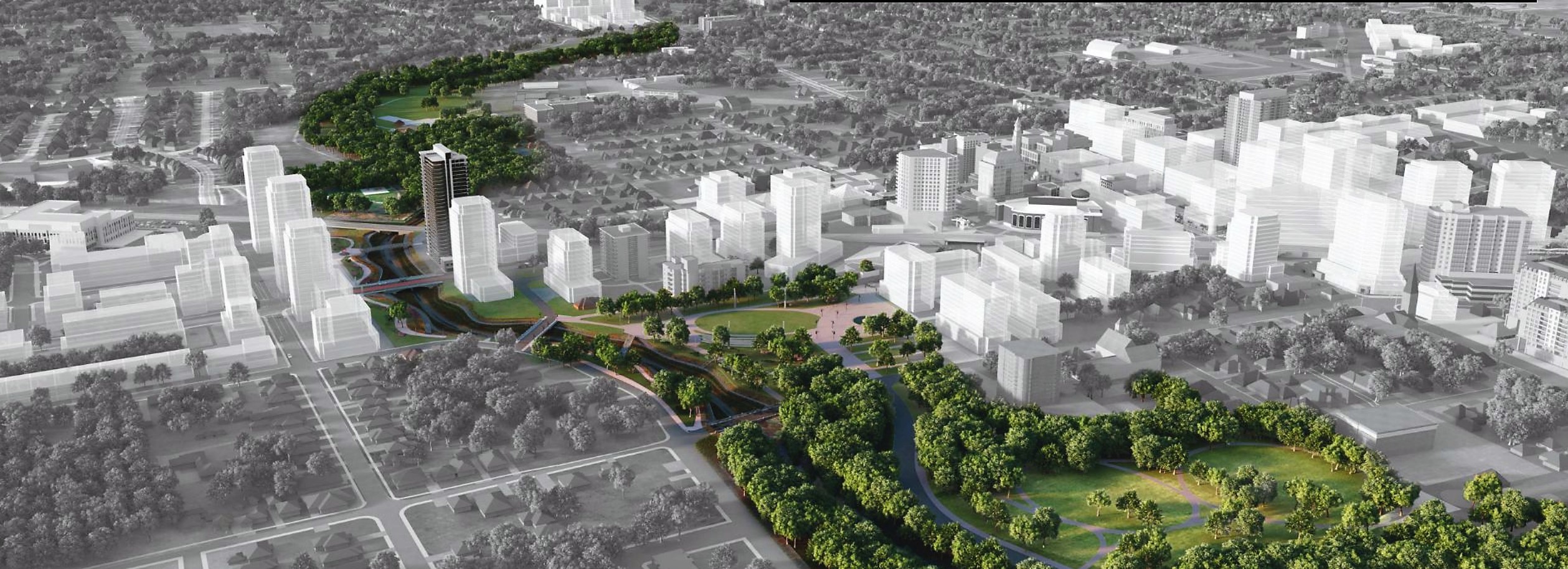
Completing the Riverwalk project could trigger significant growth in Brampton's downtown.
Much of the city’s downtown area is located within a floodplain, and the Province has designated large parts of it as a Special Policy Area (SPA) preventing development from taking place. If the design reflects the EA, it will allow 19 of the 31 hectares to be removed from the SPA, finally removing the bottleneck that has caused decades of neglect as the city centre has withered away due to the inability to develop.
Sharing a similar theme with the expansion of Peel Memorial, cost is an issue. According to the staff report, the full project is estimated at $106 million. In November, the federal government committed $38 million to the project, with the remaining $67 million listed as coming from the City or other funding sources. How the City plans to secure its share is unclear.
In its 2021 budget, the city states it’s making a $26.1 million investment in the project over the next three years. This year, the city will invest $4.88 million for designing the project, $7.25 million for land acquisition in 2022, and an estimated $14 million for the first year of construction in 2023. The Pointer was told this money will come from existing capital funds, reserve transfers, and contributions from the Disaster Mitigation and Adaptation Fund, which comes from the federal or provincial level.
Details breaking down the specifics of these outlined funding sources were not provided and it’s unclear if the City will have these envelopes secured any time soon. If the City is able to secure the $26.1 million, it’s not known how it will make up the remaining $40.9 million by the end of council’s term.
Like the case with badly needed healthcare expansion, Brown has failed to budget any funds to help resuscitate a downtown that is crumbling before his eyes. Despite his promise at the very beginning of his term to finally address the need for downtown investment, he has ignored the problem while ramming through three consecutive tax freezes.
He shoved aside the Downtown Reimagined project which the previous council had approved and now murals hang along the streets surrounding City Hall promising a revitalization the mayor stopped. He has not explained why the plan remains shelved and unfunded, since he postponed it shortly after taking office.
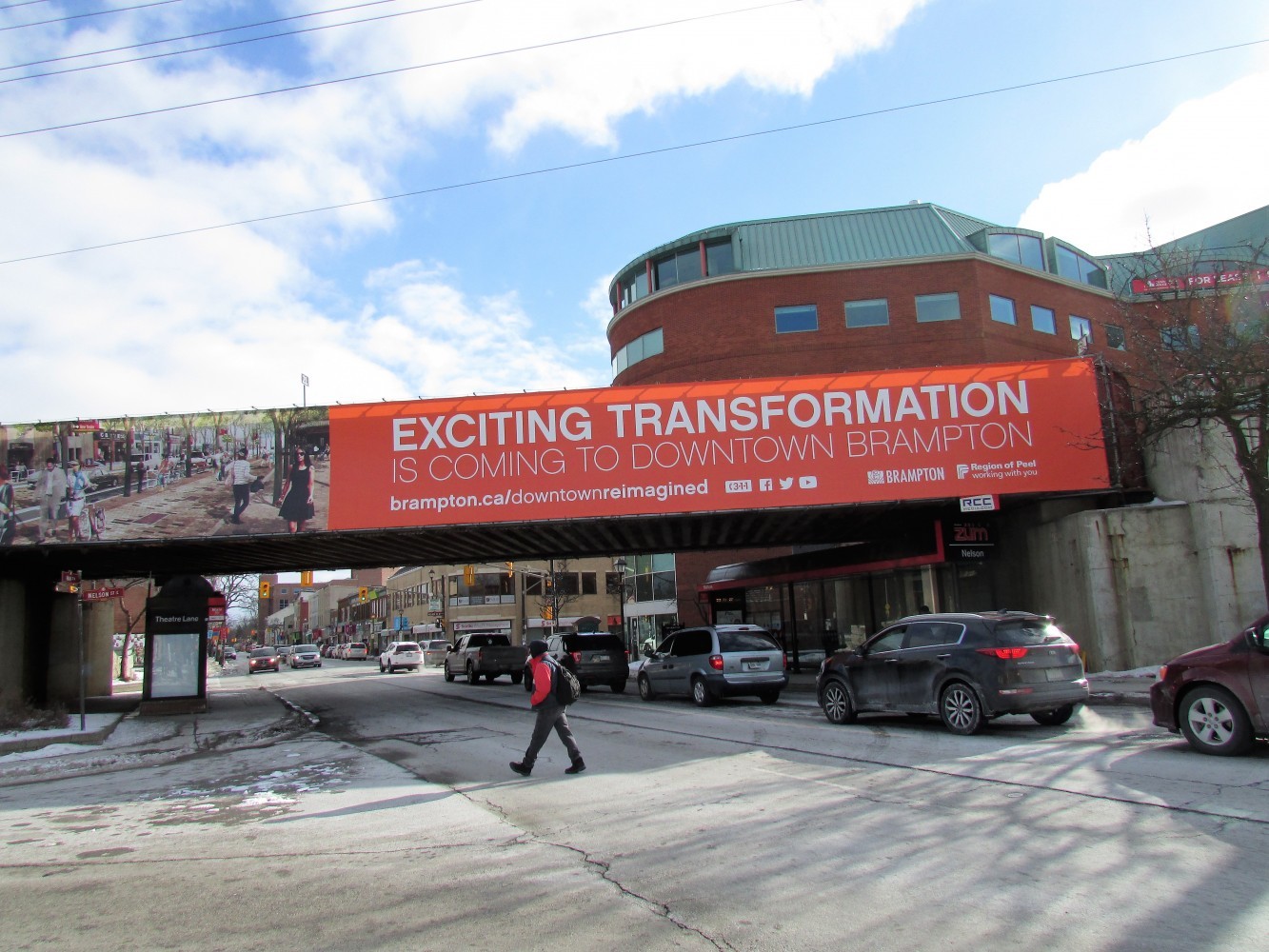
The "exciting transformation" has yet to arrive in downtown Brampton.
Unlike the previous two, a third priority is a project council launched itself during this term, to create the city’s first stand-alone, complete university campus. Named BramptonU, the goal is to secure commitments and funding from the provincial government by the end of the term. So far, the Province has been silent on supporting the project, despite Mayor Brown’s claims on multiple occasions that the Province supports this.
No money has been set aside in Queen’s Park’s budgets, there has been no mention of BramptonU in any of the Province’s budget documents and no public acknowledgement of the plan has been made by the PC government.
In a January 2021 report, the latest on the initiative, City staff said the City received “correspondence” from the Province regarding a proposal but was requested not to share the information publicly while the Province “works towards the framework for its post-secondary education expansion.”
Immediately after Brown was elected in 2018, Ford cut $90 million in funding for a downtown Ryerson University satellite campus that had been secured under the previous Liberal government.
The city says it is continuing to take part in stakeholder relations, meeting with businesses to explore, in part, what the university will mean for the community and how the venture could support the development of certain industries. In July, the City shared a preview of the plan, highlighting potential economic benefits, models for future governance and areas of academic study.
The cost of the project has not been revealed. The Pointer was previously told a business plan will be submitted to the Province in the first quarter of the year, but it’s not clear if this has been done or what information the report contains.
There has been no money budgeted by the City for the actual capital cost to build the campus, and it remains unclear how it plans to pay for a project that could cost more than $500 million.
The Pointer sent a detailed list of questions to the City asking about costs related to the prioritized projects on its list. No response was received.
Email: [email protected]
Twitter: @nida_zafar
Tel: 416 890-7643
COVID-19 is impacting all Canadians. At a time when vital public information is needed by everyone, The Pointer has taken down our paywall on all stories relating to the pandemic and those of public interest to ensure every resident of Brampton and Mississauga has access to the facts. For those who are able, we encourage you to consider a subscription. This will help us report on important public interest issues the community needs to know about now more than ever. You can register for a 30-day free trial HERE. Thereafter, The Pointer will charge $10 a month and you can cancel any time right on the website. Thank you.
Submit a correction about this story


